STORE AUCTIONS ALL SPECIMENS ON SALE MINERALS ACCESSORIES BOOKSTORE RULES REGISTER LOGIN ABOUT US CONTACT US MAILING
SPECIMENS
now available:
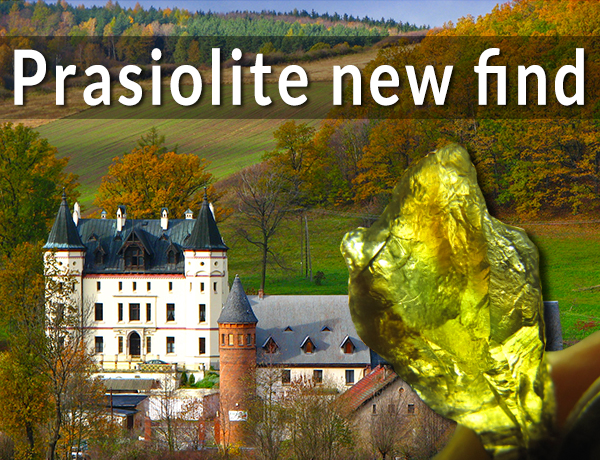
Prasiolite from Sokołowiec area, Kaczawskie Mountains, Lower Silesia, Poland
by Tomasz Praszkier, Piotr Kenis and Piotr Komza
This time we would like to share with you small interestesting find of very rare quartz variety - prasiolite.
PRASIOLITE
Prasiolite is an extremely rare transparent green variety of quartz. The color is idiochromatic in nature, resulting from the presence of Fe2+ ions substituting for Si in the crystal structure.
The other green variety of quartz, adventurine, is non-transparent, and its color is considered to be allochromatic, resulting from the presence of intergrowths of green minerals, such as the chromium mica fuschite, chlorite, or actinolite.
The history of prasiolite can be traced back to the year 1950. At that time in the US, a few jewelers started to sell products with so-called “green amethyst” (artificial green quartz). Eventually this material was named prasiolite, from Greek prasinos – chive-green, and lithos – stone.
There are presently two main sources of prasiolite used for jewelry: amethyst from the Montezuma Mine in Rio Grande do Sul state in Brazil, which are heated to temperatures of 400-500°C in order to obtain the proper green coloration, and yellowish quartz from various Brazilian localities, which are bombarded with 60Co isotope in order to obtain the ‘prasiolite’ color. A few tons of such artificially treated quartz is produced annually from Brazil. Irradiated green quartz eventually loses its color due to exposure to sunlight as well as to temperatures exceeding 150°C.
The first natural prasiolite quartz was found in the Lower Silesia region of Poland. In 1990 an international team of Polish and Ukrainian scientists described for the first time specimens from the vicinity of Kłodzko and Płóczki Górne. Scientists have proven that the green color in this variety of quartz results from the presence of Fe2+ ions within the crystal structure.
Lower Silesia prasiolite is mainly found in the vicinity of Płóczki Górne. They form crystals that completely or partially fill amygdules embedded in porphyrtitic volcanic rocks. Such nodules are of an intense green color. Prasolite also frequently forms in the central parts of agate nodules. Although prasiolite from this area is a valuable geological material to researchers, its value to mineral collectors is much greater.
During the last 10 years, new occurrences of olive-green prasiolite were found in the Kaczawa Mountains. They are particularly numerous in the proximity of Sokołowiec, where they are occur with and are genetically related to well-known agate occurrences.
Outside of Poland, prasiolite has been found in only a few localities, such as an area on the California border just north of Reno, Nevada (USA), and in the Amethyst Quarry near Thunder Bay, Ontario (Canada).
RECENT PRASIOLITE FIND IN SOKOŁOWIEC
The Nowy Kościół area is famous for numerous agates occurrences. One of them is Sokołowiec, which has produced agate specimens for several decades. The most important outcrops in the Sokolowiec region are located between the villages of Sokołowskie Wzgórza, Łysa Góra, Gradowa and Sądereckie Wzgórza. This region is underlain by Permian basaltic trachyandesite, which is rich in amygdules in which both prasiolite and agate sometimes form. Prasiolite is known in the area from three different outcrops. Two of these outcrops are located on the slopes of Łysa Góra (locally known as “za Pałacem” or “behind the Palace”). Some of the amygdules are filled by quartz and chalcedony, or more typically, quartz pseudomorphs after barite.
In June of 2013, prasiolite was found in the same area, but in a completely new outcrop. This new locality was found discovered during exploration for new agate occurrences in the area. Only ~10% of the amygdules at this locality contain prasiolite, and another 20% contain agate. Unfortunately the host rocks as well as amygdules are heavily weathered, so many of the specimens fall apart during extraction. The amygdules filled by pure quartz are more resistant to erosion, and some have cracks between the quartz crystals display a pronounced irisation effect. Prasiolite from this outcrop occurs in many different shades ranging from blueish-green and brownish-green to intense green. Besides prasiolite, smoky quartz and amethyst are also known from this locality. Colorless quartz is of course the most common variety. Usually the colorless quartz is associated with prasiolite in the same amygdules, which creates an interesting color zonation - part of the quartz is white or transparent while the other part is intensively green. In some specimens the outer zone is green and in the others the prasiolite is surrounded by white quartz. This indicates that quartz growth was a multistage process and “colorless” quartz can both be older or younger than prasiolite. Some specimens are very showy and colorful due to this striking green-white color zonation.
These prasiolite and quartz-bearing amygdules reach up to 12 cm in size, though they are typically between 2-3 cm. Rarely, cavities with free growing prasiolite crystals are found, though only two specimens of this type were found in 6 months of exploration.
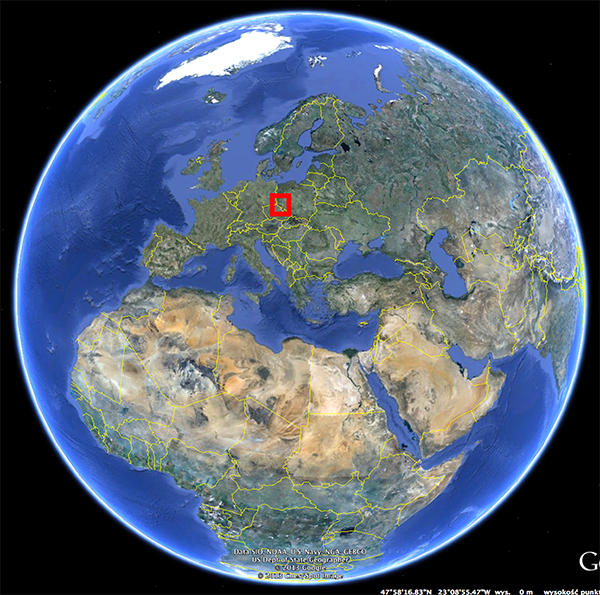
Satellite photo of Earth with marked area that is shown in the next figure. Google Earth.
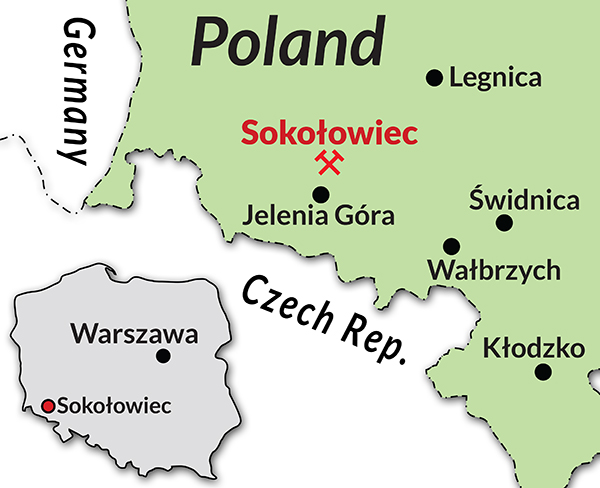
Map of Poland with Sokołowiec area marked, and close-up of south-western Poland.
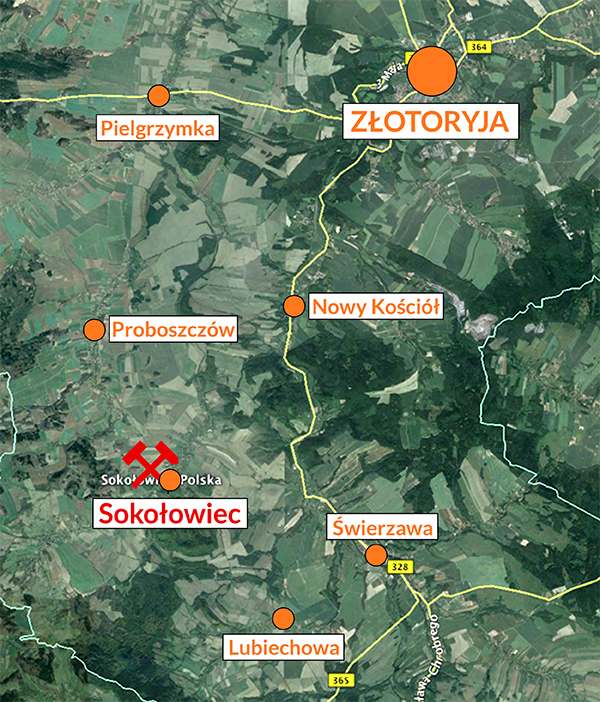
Area around Sokołowiec with bigger villages including famous agate localities - Nowy Kościół & Lubiechowa.
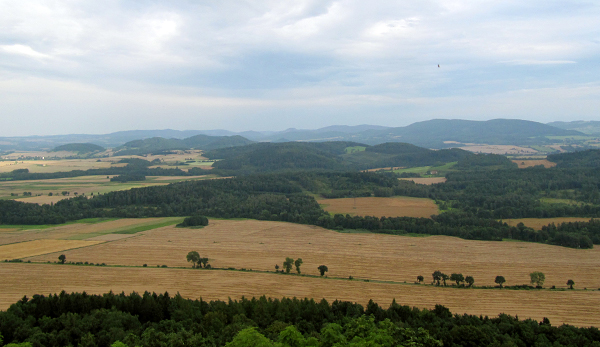
Typical landscape in the area. P. Kenis & P. Komza photo.
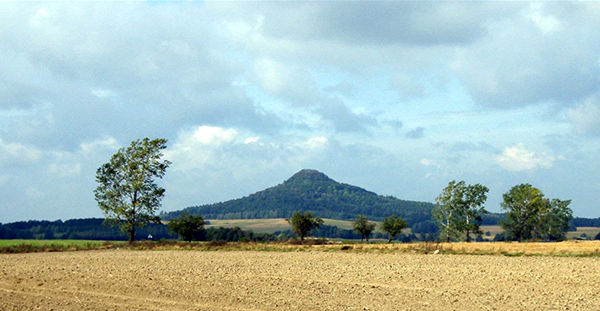
View to the Ostrzyca hill - Miocene volcano cone.
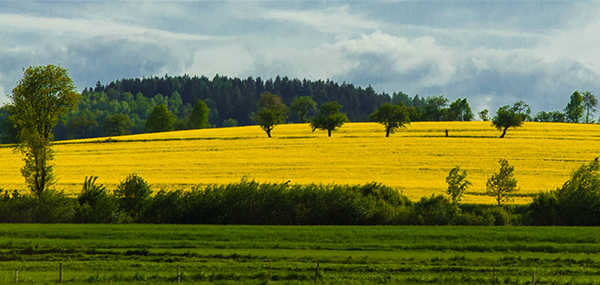
Landscapes around Sokołowiec.
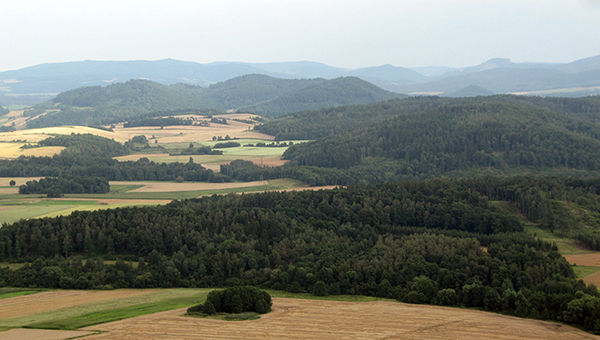
View to the hills around Sokołowiec. P. Kenis & P. Komza photo.

Winter view of the Sokołowiec area. P. Kenis & P. Komza photo.
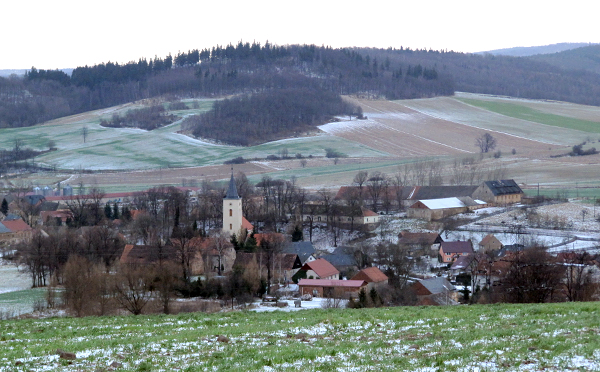
Sokołowiec village "center". P. Kenis & P. Komza photo.
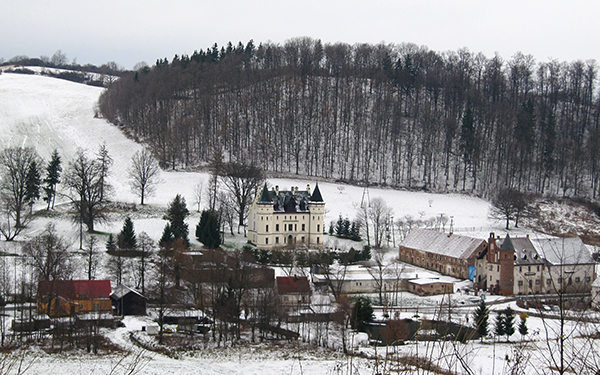
Palace in Sokołowiec, note the hill behind it, where prasiolite locality "behind the Palace" is located. P. Kenis & P. Komza photo.
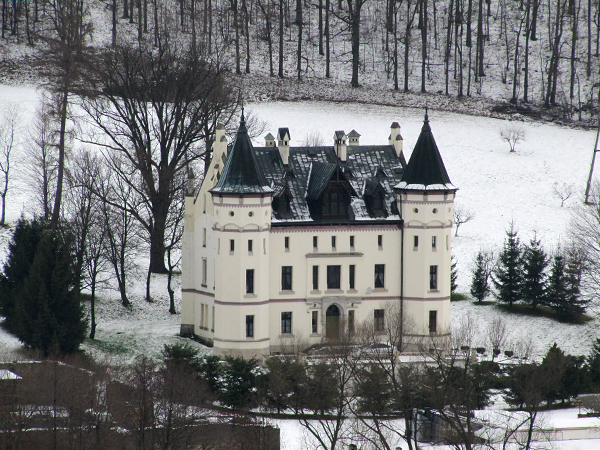
XVIIIth century Palace in Sokołowiec in the winter. P. Kenis & P. Komza photo.
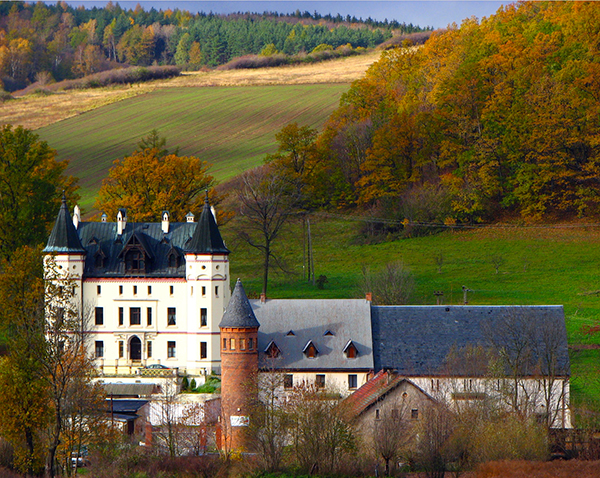
XVIIIth century Palace in Sokołowiec in the autumn. Prasiolite locality is located on the hills behind it.
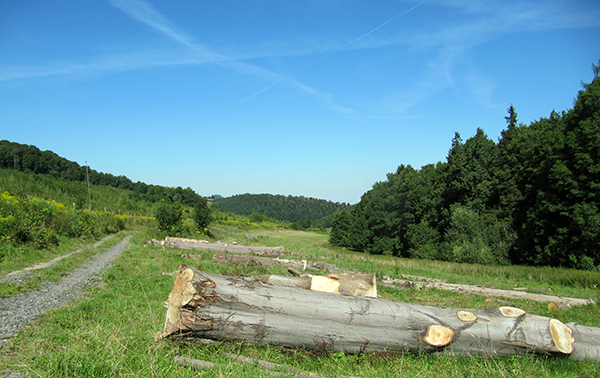
On the way to the prasiolite locality. P. Kenis & P. Komza photo.
Digging for agates and prasiolites in Sokołowiec. P. Kenis & P. Komza photo.
Digging for agates and prasiolites in Sokołowiec. P. Kenis & P. Komza photo.
Amygdules start to show up! P. Kenis & P. Komza photo.
Agate amygdule in situ. P. Kenis & P. Komza photo.
Agate amygdule in situ. P. Kenis & P. Komza photo.
Agate amygdule in situ. P. Kenis & P. Komza photo.
Agate amygdule in situ. P. Kenis & P. Komza photo.
Agate amygdule in situ. P. Kenis & P. Komza photo.
Amygdules with free growing prasiolite crystals inside. P. Kenis & P. Komza photo.
The prize for the heavy work. P. Kenis & P. Komza photo.
Amygdules after washing. P. Kenis & P. Komza photo.

In Sokołowiec beside of the amygdules filled by white quartz the most common are the ones with agate-quartz pseudomorphs after barite. P. Kenis & P. Komza photo.

Amygdule with agate-quartz pseudomorphs after barite. P. Kenis & P. Komza photo.

Amygdule with agate-quartz pseudomorphs after barite. P. Kenis & P. Komza photo.

Agate from Sokołowiec. P. Kenis & P. Komza photo.

Agate from Sokołowiec. P. Kenis & P. Komza photo.

Agate from Sokołowiec. P. Kenis & P. Komza photo.
Prasiolites are found only in a very small percentage of amygdules from the locality. A. Korzekwa photo.

Gem green quartz - prasiolite. Color is not caused by inclusions but by the higher content of Fe2+ in the crystalographical structure. P. Kenis & P. Komza photo.
Agate with prasiolite and white quartz. A. Korzekwa photo.
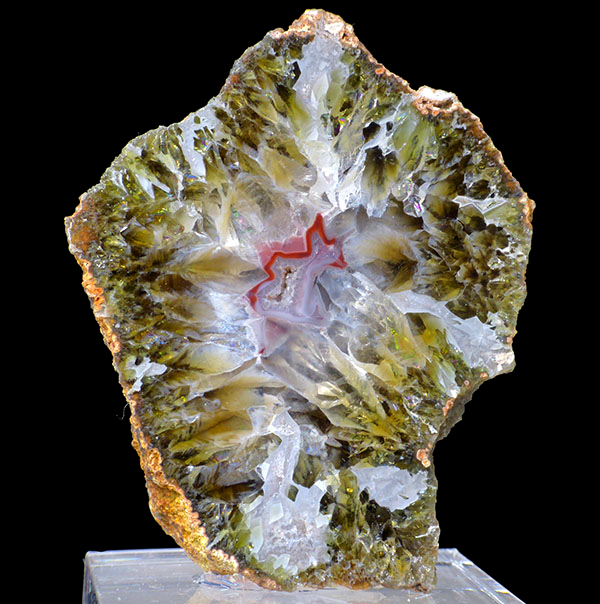
Agate in the internal part of prasiolite. A. Leszczuk photo.
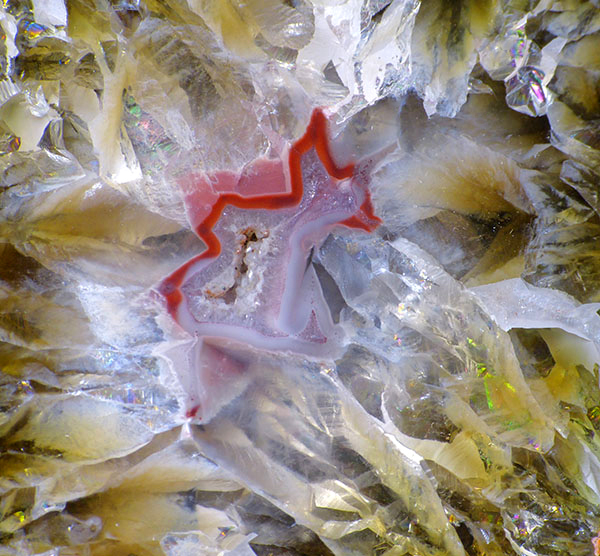
Close up of the specimen above. A. Leszczuk photo.
The outer prasiolite zone and white quartz internal zone. A. Korzekwa photo.
In contrary to the specimen above here we have the outer white quartz zone and prasiolite internal zone. A. Korzekwa photo.

Prasiolite from Sokołowiec. P. Kenis & P. Komza photo.

Prasiolite from Sokołowiec. A. Leszczuk photo.
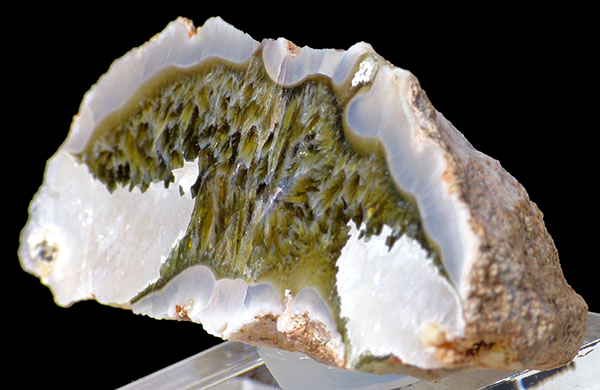
Prasiolite from Sokołowiec. A. Leszczuk photo.
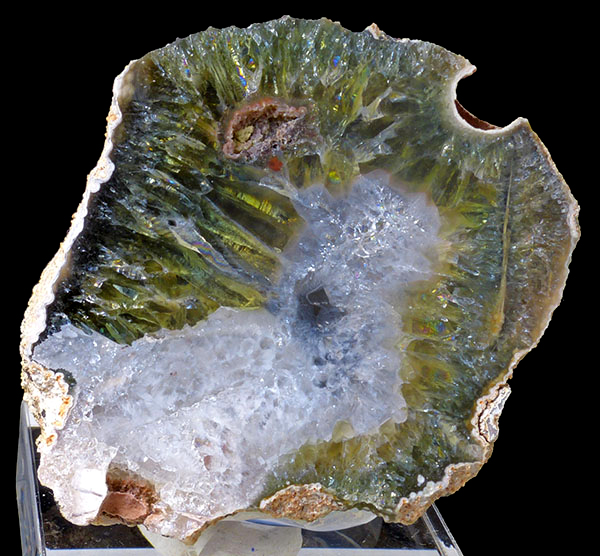
Prasiolite from Sokołowiec. A. Leszczuk photo.
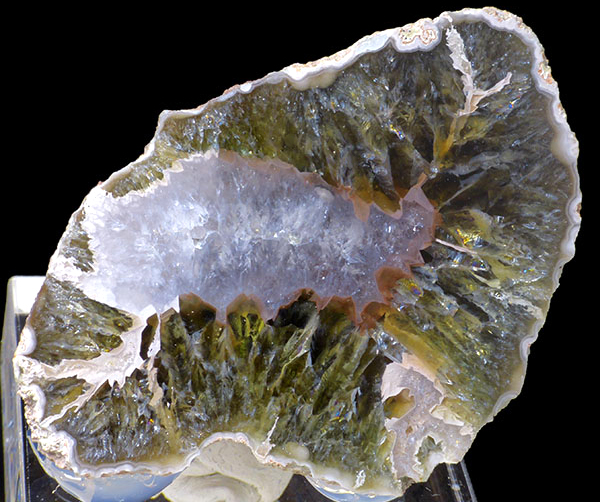
Prasiolite from Sokołowiec. A. Leszczuk photo.
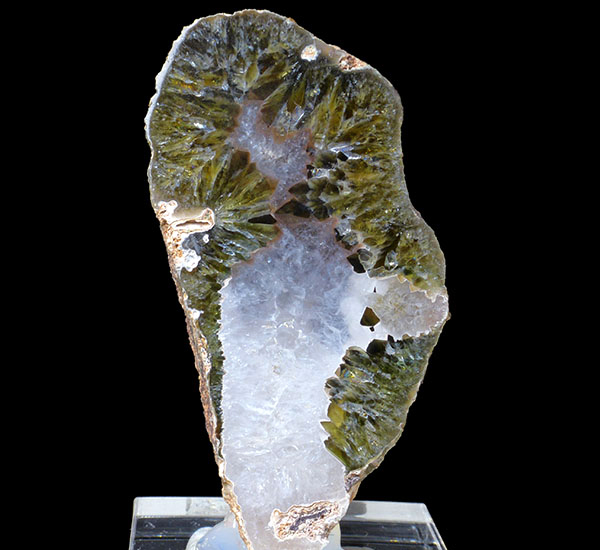
Prasiolite from Sokołowiec. A. Leszczuk photo.
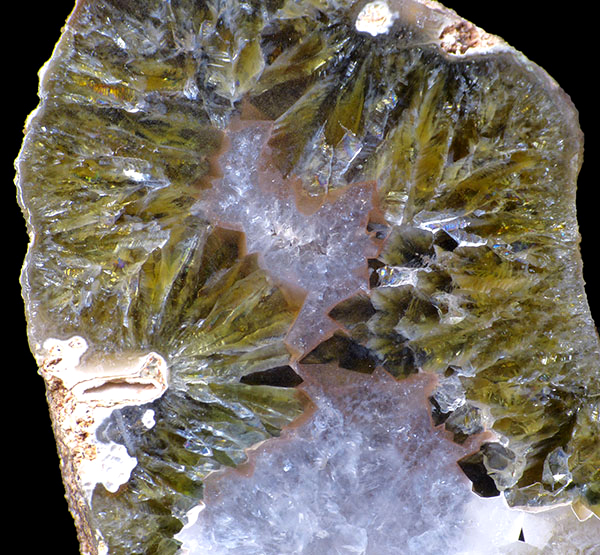
Prasiolite from Sokołowiec. A. Leszczuk photo.
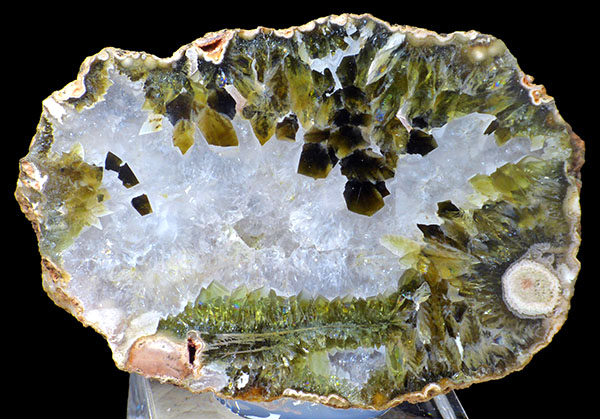
Well formed prasiolite crystals frozen in white quartz. A. Leszczuk photo.
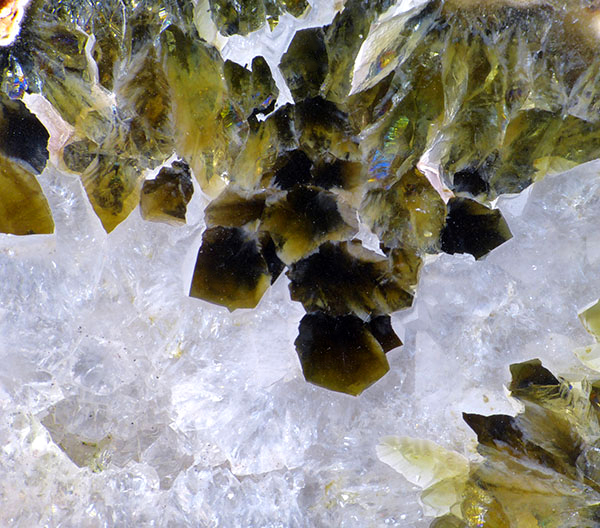
Well formed prasiolite crystals frozen in white quartz - close up of the specimen above. A. Leszczuk photo.
| Comments |
| The Vault is where we keep our very significant, admittedly pricier, specimens for viewing. These minerals often find homes with collectors who not only enjoy the beauty of fine minerals, but who treat their collections as valuable investments. |
| Acker |
| 2021-07-20 00:10:17 |
| I would like to buy prasiolite. Is it possible? |
| Monika |
| 2021-12-22 21:00:35 |
| I would also like to buy Polish prasiolite. Can you please assist me with this. Thank you |
| ania_von@hotmail.com |
| 2023-06-12 09:07:07 |
| Hi, I am sorry we do not have any for sale at the moment and I dont know anybody who does. |
| tomek |
| 2023-06-19 12:16:41 |
NEW ARTICLES
TRAVELS & ARTICLES
- Pyrite find in Finland
- Mineral notes: New zircons and pyrochlores from Morocco
- Mineral notes: New natrolites from Morocco
- Mineral pottery by Dr. Justyna Domańska-Siuda
- Calcites from Malaysia
- Veszelyites and other minerals from Congo
- Travelling through Arizona & New Mexico, USA
- Halites from the Solno Salt Mine, Poland
- Secondary minerals from Maramureș, Romania
- Calcites from Grabiszyce Quarry, Poland
OUR PUBLICATIONS
- "Fluorites from Taourirt, Morocco" in Mineralogical Almanach
- "Calcites from Grabiszyce, Poland" in LRM 2018
- "Baryte" article in the extraLapis
- MINERALS - The Collectors Newspaper #9
- MINERALS - The Collectors Newspaper #8
- Solno halites article in the Mineralogical Record
- MINERALS - The Collectors Newspaper #7
- MINERALS - The Collectors Newspaper #6
- Mibladen monograph in the Mineralogical Record
- African Secrets book